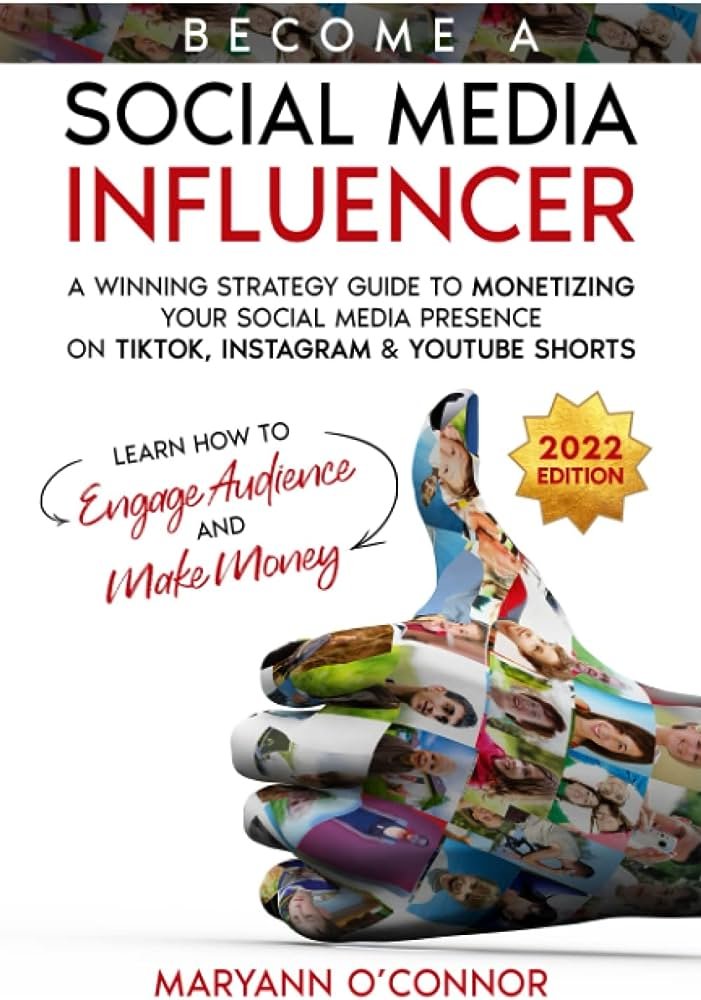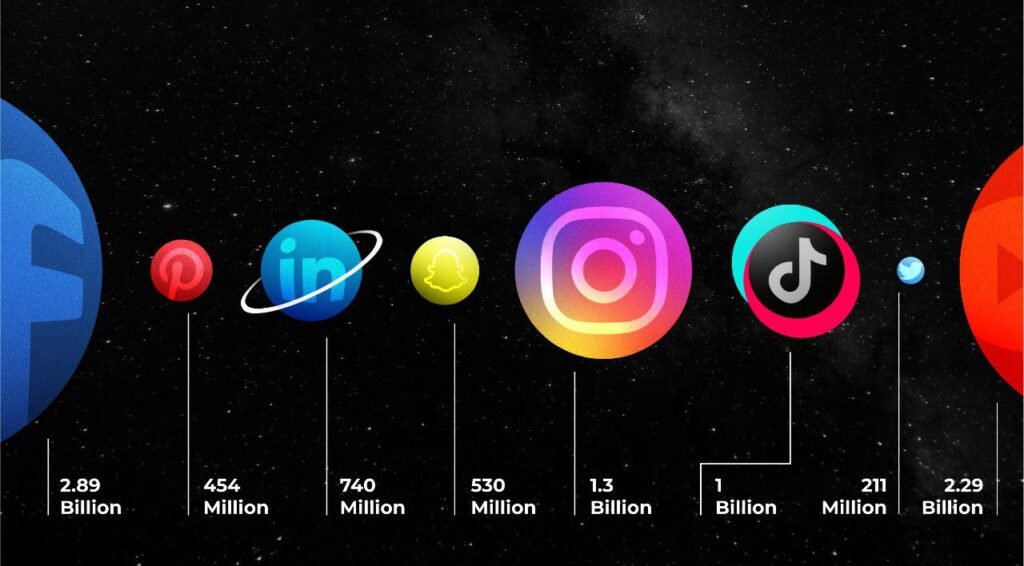Unlocking the Power of Social Media: A Complete Guide to Challenge Kits
In this comprehensive guide, you will explore the incredible potential of social media and discover how to harness its power through challenge kits. Whether you’re a business owner looking to boost your online presence or an individual seeking to engage a larger audience, this article provides the ultimate roadmap. From creating captivating challenges to leveraging influential trends, you’ll unlock the secrets to maximizing the impact of social media and propelling your brand or personal profile to new heights. Get ready to navigate the ever-changing landscape of social media and embark on an exciting journey of growth and connection.
What are Social Media Challenge Kits?
Definition of Social Media Challenge Kits
Social media challenge kits are carefully designed packages of content and instructions that are created to engage users on social media platforms. These kits are designed to encourage users to participate in a specific challenge, usually centered around a theme or topic. They provide a structured framework for users to follow and encourage them to create and share content related to the challenge on their social media profiles.
Components of Social Media Challenge Kits
A social media challenge kit typically consists of several key components:
- Challenge Theme: The overall theme or topic of the challenge, which sets the context and provides a focus for participants.
- Challenge Instructions: Clear and concise instructions that outline the goal of the challenge and how participants can take part. This may include guidelines on creating content, including specific requirements or limitations.
- Hashtags and Captions: Appropriate hashtags and captions that participants can use to identify their posts related to the challenge and make them discoverable by others.
- Visual Assets: High-quality images, videos, or graphics that participants can use to enhance their challenge posts. These assets are often branded to create a cohesive visual identity for the challenge.
- Promotional Materials: Additional materials that can help promote the challenge, such as banners, posters, or social media templates that participants and organizers can use to spread the word.
Getting Started with Social Media Challenge Kits
Identifying Your Goals and Target Audience
Before diving into creating a social media challenge kit, it’s crucial to define your goals and identify your target audience. Ask yourself what you aim to achieve through the challenge and who you want to engage. Are you looking to increase brand awareness, drive user-generated content, or promote a specific product or service? Understanding your goals will help shape the theme and content of your challenge.
Choosing the Right Social Media Platforms
Once you have defined your goals and target audience, the next step is to select the most suitable social media platforms for your challenge. Consider the demographics and preferences of your target audience to determine which platforms they are most active on. Each platform has its own strengths and features, so choose the ones that align with your goals and where your target audience is most likely to participate.
Creating a Strategic Content Plan
Having a well-thought-out content plan is essential for the success of your social media challenge kit. Brainstorm ideas for engaging and creative challenges that align with your goals. Consider the resources available to you, such as visual assets or expert knowledge, that can add value to the challenge. Create a timeline for the challenge, outlining key dates for promotion, content creation, and evaluation. A strategic content plan will help you stay organized and ensure a smooth execution of your challenge.

This image is property of Amazon.com.
Designing Effective Challenge Kits
Defining the Challenge
The heart of any social media challenge kit is the challenge itself. Clearly define the challenge and focus on a specific theme or topic that resonates with your target audience. The challenge should be fun, engaging, and easily understandable. Consider incorporating elements of gamification or competition to make it more enticing for participants.
Developing Clear Instructions
To ensure participants fully understand the challenge, it’s crucial to provide clear and concise instructions. Break down the steps they need to follow and make sure the instructions are easy to comprehend. Include any specific requirements, such as content format or length, and provide examples if necessary. Well-written instructions will help eliminate confusion and increase participation.
Choosing Appropriate Hashtags and Captions
Hashtags and captions play a vital role in organizing and categorizing challenge-related content. Choose hashtags that are relevant to your challenge theme and are not being used extensively by other campaigns. This will help users easily find and engage with challenge-related content. Additionally, create attention-grabbing captions that encourage users to participate and share their content.
Maximizing Engagement with Social Media Challenge Kits
Promoting Your Challenge Kit
To maximize participation in your social media challenge, it’s important to promote it effectively. Leverage your existing social media platforms and mailing lists to inform your audience about the upcoming challenge. Create visually appealing graphics or videos that introduce the challenge and highlights its benefits. Collaborate with influencers or partners who align with your target audience to reach a wider audience.
Encouraging User-generated Content
User-generated content is a powerful tool to enhance engagement and expand the reach of your challenge. Encourage participants to create their own unique content related to the challenge theme. This can include photos, videos, stories, or written posts. Feature and acknowledge the best entries on your social media platforms, and consider offering incentives or rewards for exceptional user-generated content. This will motivate participants to actively engage with the challenge.
Collaborating with Influencers
Influencer collaborations can significantly amplify the impact of your social media challenge kit. Identify influencers who have a strong presence on the platforms you’re targeting and whose audience aligns with your target audience. Engage them early on and involve them in the challenge planning process. They can help create buzz around the challenge, generate additional participation, and provide valuable insights and perspectives.

This image is property of theinfiniteagency.com.
Measuring Success and Analyzing Metrics
Setting Key Performance Indicators (KPIs)
To evaluate the success of your social media challenge kit, it’s important to establish key performance indicators (KPIs) that align with your goals. These could include metrics such as reach, engagement, conversions, or user-generated content volume. Setting measurable goals will enable you to track progress and make informed decisions for future challenges.
Using Analytics Tools
Leveraging social media analytics tools is crucial for gathering data and measuring the performance of your challenge. Platforms like Facebook Insights, Twitter Analytics, or Instagram Insights provide valuable insights into reach, engagement, and audience demographics. Use these tools to monitor your challenge’s performance in real-time and identify areas where improvements can be made.
Evaluating Reach, Engagement, and Conversions
Reach measures the number of people who have seen your challenge content. Engagement refers to the actions taken by participants, such as likes, comments, or shares. Conversions indicate whether the challenge has achieved its intended goals, such as driving traffic to a website or increasing sales. Regularly evaluate these metrics throughout the duration of your challenge and adjust your strategy accordingly to optimize results.
Case Studies: Successful Social Media Challenge Kits
Case Study 1: Brand X’s Fitness Challenge
Brand X, a leading fitness brand, launched a month-long fitness challenge targeting individuals looking to improve their physical well-being. The challenge encouraged participants to share their workout routines, healthy meal ideas, and progress photos using the hashtag #BrandXFitnessChallenge. Brand X collaborated with fitness influencers to promote the challenge and offered prizes to participants who achieved significant results. The challenge garnered over 10,000 posts and resulted in a 25% increase in brand awareness.
Case Study 2: Organization Y’s Sustainability Challenge
Organization Y, an environmental non-profit organization, created a sustainability challenge kit to raise awareness about eco-friendly practices. Participants were tasked with sharing their innovative ideas for reducing waste, conserving energy, or promoting sustainable lifestyles. Organization Y collaborated with local businesses and influencers passionate about sustainability to spread the word. The challenge generated over 5,000 entries and led to a 30% increase in donations to the organization.
Case Study 3: Influencer Z’s Beauty Challenge
Influencer Z, a popular beauty YouTuber, designed a beauty challenge kit targeting makeup enthusiasts. The challenge involved participants recreating trendy makeup looks using specific products and techniques, and sharing their results on social media with the hashtag #InfluencerZBeautyChallenge. Influencer Z engaged her loyal audience by sharing her own tutorial videos and showcasing entries from participants. The challenge received over 50,000 submissions and led to a 15% increase in subscribers and engagement on Influencer Z’s channel.

This image is property of Amazon.com.
Avoiding Common Pitfalls and Challenges
Ensuring Compliance with Platform Guidelines
When creating social media challenge kits, it’s important to familiarize yourself with the guidelines and policies of each platform you’ll be utilizing. Violating these guidelines may result in your account being flagged or suspended. Pay attention to restrictions on content, hashtags, and contests to ensure your challenge remains within the boundaries set by each platform.
Handling Negative Feedback or Controversy
Depending on the nature of your challenge, it is possible to encounter negative feedback or controversy from participants or observers. Be prepared to handle these situations by addressing concerns promptly and transparently. Listen to feedback, apologize if necessary, and take steps to rectify any misunderstandings. Turning negative experiences into positive opportunities for growth and improvement can enhance your brand’s reputation.
Managing Copyright and Intellectual Property
When creating challenge kits, be mindful of copyright and intellectual property laws. Ensure that all visual assets, hashtags, or captions you provide are either original or have the necessary permissions. Crediting the original creators and asking for permissions when using user-generated content will foster a respectful and legally compliant environment for your challenge.
Staying Up-to-date with Social Media Trends
Exploring Emerging Social Media Platforms
Social media landscape is constantly evolving, with new platforms emerging regularly. Stay ahead of the curve by exploring these platforms and assessing their potential for engaging your target audience. Consider the unique features and user demographics of each platform and evaluate whether they align with your challenge goals and content offerings.
Leveraging User-generated Content Trends
User-generated content trends can offer valuable insights and inspiration for your social media challenge kits. Stay tuned to the latest trends and popular hashtags to identify opportunities for creating challenges that resonate with your target audience. Keep an eye on what types of content are gaining traction and adapt your challenge themes and instructions accordingly.
Adapting to Algorithm Changes
Social media platforms frequently update their algorithms, impacting content visibility and engagement. Stay informed about algorithm changes and adjust your content strategy accordingly. Explore ways to boost engagement, such as encouraging meaningful interactions in comments or utilizing storytelling techniques to capture attention in a crowded feed.

This image is property of theinfiniteagency.com.
Tools and Resources for Social Media Challenge Kits
Social Media Management Platforms
Utilizing social media management platforms can streamline your challenge kit creation and execution process. Tools such as Hootsuite, Buffer, or Sprout Social offer features like scheduling, analytics, and content curation, enabling you to efficiently manage multiple social media platforms and track the performance of your challenges.
Content Creation and Editing Tools
To create visually appealing content for your challenge kit, consider using content creation and editing tools. Canva, Adobe Spark, or PicMonkey are popular options that allow you to design and customize graphics, images, or videos without extensive graphic design knowledge. These tools offer a wide range of templates, fonts, and effects to enhance the visual appeal of your challenge.
Hashtag Research and Tracking Tools
Hashtags are a critical component of social media challenges, and using hashtag research and tracking tools can help optimize hashtag usage and performance. Tools like Hashtagify, RiteTag, or Sprout Social can assist in finding relevant and trending hashtags, ensuring your challenge garners maximum visibility and engagement. Additionally, they provide analytics that allow you to monitor the performance of specific hashtags over time.
Conclusion
Recap of the Power of Social Media Challenge Kits
Social media challenge kits are an effective way to engage users, drive participation, and increase brand awareness on social media platforms. They provide a structured framework for users to follow, encouraging them to create and share diverse content related to a specific challenge. Through strategic planning, thoughtful design, and effective promotion, challenge kits can unlock the potential to reach a wide audience and achieve measurable success.
Key Takeaways
- Social media challenge kits are carefully designed packages of content and instructions that encourage users to participate in a specific challenge.
- Identifying goals, selecting the right platforms, and creating a strategic content plan are crucial steps in getting started with social media challenge kits.
- Effective challenge kits involve defining the challenge, providing clear instructions, and using appropriate hashtags and captions.
- Maximizing engagement with social media challenge kits can be achieved through strategic promotion, encouraging user-generated content, and collaborating with influencers.
- Measuring success and analyzing metrics involves setting KPIs, using analytics tools, and evaluating reach, engagement, and conversions.
- Avoid common pitfalls and challenges by ensuring compliance with platform guidelines, handling negative feedback or controversy, and managing copyright and intellectual property.
- Stay up-to-date with social media trends by exploring emerging platforms, leveraging user-generated content trends, and adapting to algorithm changes.
- Benefit from social media management platforms, content creation and editing tools, and hashtag research and tracking tools to optimize the effectiveness of your challenge kits.
Future Trends
Looking ahead, social media challenge kits are expected to continue evolving as new platforms emerge and user preferences change. As technology advances, augmented reality (AR) and virtual reality (VR) could potentially be integrated into challenge kits, providing an immersive and interactive experience for participants. Additionally, personalization and customization are likely to become more prominent, allowing participants to tailor challenges to their specific interests and preferences. As the digital landscape continues to evolve, the possibilities for social media challenge kits are limitless.

